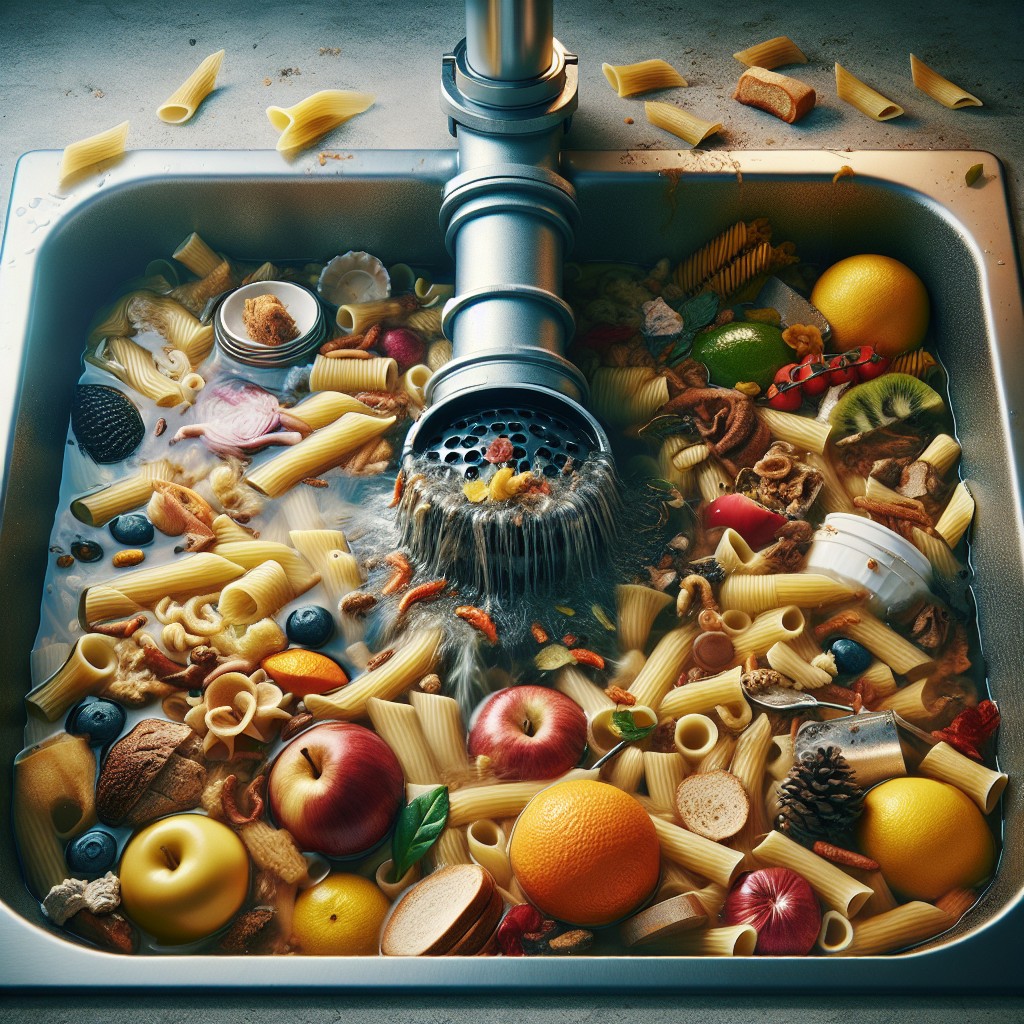Last updated on
Discover practical steps to fix your garbage disposal when it’s not draining and get it back in working order efficiently.
Key takeaways:
- Improper items can cause a clogged garbage disposal.
- Grease build-up is a common cause of blockages.
- Overloading the disposal can lead to backups.
- Lack of water can result in particle remnants sticking to the sides.
- Prevent clogs by running cold water, cutting waste into smaller chunks, and using a sink strainer.
What's Inside
Reasons Why You Have a Clogged Garbage Disposal

Understanding the common culprits behind your clogged unit is essential for both troubleshooting and prevention. Often, it’s everyday items that you wouldn’t suspect at first glance.
– Improper items: Things like banana peels, eggshells, coffee grounds, and fibrous vegetables can form a dense, challenging mass that your disposal can’t break down. – Grease build-up: Oils and fats may liquefy during disposal but solidify upon cooling, creating a stubborn blockage in your pipes. – Overloading: Feeding too much waste into the disposal at once can overwhelm the system, leading to a backup. – Lack of water: Running the disposal without enough water can leave particle remnants that stick to the sides and build up over time.Bearing these points in mind helps identify behaviors to change, ensuring your disposal stays clear and functional.
How to Unclog a Garbage Disposal On Your Own
Before diving in, ensure your safety by turning off the power to the disposal unit. Next, perform a visual inspection using a flashlight to look for obvious obstructions. Use pliers or tongs to remove any foreign objects—never put your hands inside. If there’s no visible clog, use a garbage disposal wrench to turn the blades manually or an Allen wrench at the bottom of the unit, which can dislodge jams.
In the event of a stubborn blockage, a natural remedy involving vinegar and baking soda can be effective. Pour half a cup of baking soda into the disposal followed by an equal amount of vinegar. The reaction helps break up gunk. Allow it to fizz for a few minutes before rinsing with hot water while running the disposal.
Another method involves using a plunger. Cover the drain opening with the plunger bell and plunge vigorously. This action can create enough suction to push the clog through. If the clog persists, it may be time to check the P-trap—an elbow-shaped pipe under the sink that can accumulate debris. Place a bucket underneath, loosen the connections with a wrench, and remove any blockage you find.
These steps usually tackle the most common causes of disposal clogs and can help restore proper drainage without the need for professional help. Remember, regularly running water and periodic grinding of ice cubes can help keep your disposal clear and functioning efficiently.
Prevent Clogged Garbage Disposals to Avoid Time-Consuming Fixes
Adopting preventative measures can save you from the hassle of a non-draining disposal down the line. Here are some actionable tips:
- Run cold water when grinding food. Cold water solidifies any grease, making it easier for the disposal to break it down.
- Cut waste into smaller chunks before disposal. Large pieces of waste are harder to grind and more likely to cause blockages.
- Avoid fibrous or starchy materials. Items like banana peels, potato skins, and coffee grounds can wrap around the blades or clump together, obstructing the drain.
- Go easy on the disposal use. Regularly overloading your disposal increases the likelihood of clogs.
- Use a sink strainer. It catches any non-disposable items, preventing them from slipping down the drain.
- Regularly clean your disposal. Routine cleaning with vinegar and baking soda can clear out debris and reduce the buildup that may lead to clogs.
Garbage Disposal Maintenance
Regular upkeep can substantially extend the life of your disposal unit and minimize plumbing woes. Consistent cleaning can be as straightforward as flushing the garbage disposal with dish soap and cold water after each use. For a more thorough cleanse, grinding a handful of ice cubes along with coarse salt can help scrub the interior clean.
To tackle odor-causing bacteria, occasionally grind up citrus peels; the natural acids aid in breakdown while leaving a fresh scent. Additionally, avoid grinding non-food items or complex waste like fibrous vegetables and expandable starches, which are notorious for causing blockages.
Remember, never pour grease or oil down your unit, as they solidify and clog up the system. Moreover, a bi-monthly check for wear and tear, especially on the shredding blades and the splash guard, can preempt any surprise malfunction. Keep tools, like the wrench provided by the manufacturer, handy to swiftly address minor hiccups, further ensuring the optimal performance of your disposal unit.




